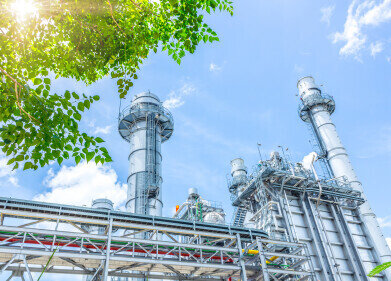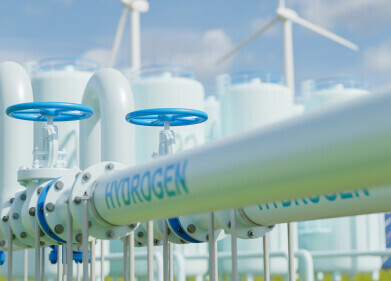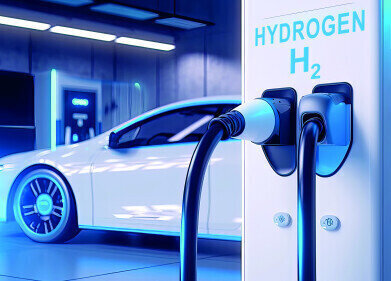Hydrogen Fuel
EU Set to Boost Hydrogen Fuel Following COP 27 Talks
Nov 30 2022
With all of the ink spilled in discussing the summit, it’s remarkable that one of the most under-reported outcomes from the 27th annual Conference of the Parties to the United Nation’s Framework Convention on Climate Change was also one of the most consequential. Indeed, whilst there’s a broad consensus within the international community that COP 27 was a failure when it came to the setting more stringent targets, the commitments established at the Conference with regard to the promotion of green hydrogen could almost serve as stand-in deadlines for decarbonisation – and the way that these projects will be structured aligns with the UN’s renewed sense of obligation to developing nations taking the brunt of the climate crisis.
The Hydro-Generation Gap
As a result of talks held at COP 27, the European Union has announced a set of partnerships with Kazakhstan, Egypt and Namibia to import renewable hydrogen in the future. It appears that this is part of the Union’s attempt to substantially decarbonise its steel production, with 30% of the sector set to be running on hydrogen power at net-zero emissions by 2030. At the moment, the iron and steel industries are responsible for 11% of global carbon dioxide emissions, according to Carbon Brief, and steel, in particular, is highly dependent upon coal, with 60% of sites across the world using coal furnaces.
Alternatives to such a production process, which seems not even last century but comes almost straight out of the nineteenth century, are emerging, however - and not just natural gas with carbon capture for mitigation. No: the odds favour the electric arc furnace, which combines recycled metals with hydrogen. They’re not as ubiquitous as coal-powered units quite yet but even before these market-altering partnerships were announced, global demand has been steadily growing.
These developments have piqued the interest of many economic analysts, intrigued by the prospect of a large-scale transition towards hydrogen power. One of them, the analyst Wood Mackenzie, estimates that an annual production of 52 million tonnes of green hydrogen should cover it. Such an explosion could be led by the Global South, as the partnerships themselves indicate, given that many of these states are naturally rich in metals and have already built up significant industrial capacity. It may provide a pathway to development that does not release large amounts of carbon dioxide into the atmosphere, offering a neat solution to many of the political struggles that have dogged all previous climate summits.
Indeed, many nations have already stolen a march. For instance, one of the EU’s partners, Kazakhstan, has already begun construction for one of the world’s largest hydrogen production facilities, and Chile leads South America in clean hydrogen, aiming to be one the world’s top three exporters of this potentially vital commodity by 2040.
At the same time, there’s been significant innovation in the industry, which is helping to drive down costs at a rapid pace. Take for instance a new instrument like polymer electrolyte membrane electrolysers, which yield almost double the amount of hydrogen provided by conventional methods. All of this is a boon to the electricity industry, too, of course, so there’s only more investment to come for the sector – and the seal of approval from the European Union can’t hurt the growing desirability of this industry.
No Maritime for Delay
Alongside such strides in industry, COP 27 saw promising developments in the maritime industry, as shipping and manufacturing companies commit to transition to hydrogen. Two of the biggest names in the game, Maersk, the world-famous logistics company, and MAN Energy Solutions (MAN ES), which manufactures engines and turbomachinery for shipping units, have partnered with hydrogen providers to meet a target of zero emissions from deep sea vessels after 2030 with the aim of fully decarbonising the maritime industry by 2050. At the moment, just under 3% of global CO2 emissions come from shipping, but a transition to hydrogen would require an annual production 5.5 million tonnes of fuel with projected fleet volumes. And with the inclusion of MAN ES, this agreement could produce a knock-on effect in other, more polluting sectors since the manufacturer also designs units for road, rail and powerplants, sectors which are jointly responsible for almost 57% of emissions.
The agreement was spearheaded by the Getting to Zero Coalition, of which Maersk and MAN ES are members, alongside almost all other major shippers and maritime manufacturers as well as a whole bunch of green hydrogen producers, advocacy groups, think-tanks, and ports, including in Spain, Britain, the Netherlands, Sweden, North America, Canada, Germany, and Denmark. Indeed, part of the agreement calls on Ports to renovate in preparation for the coming switch to green hydrogen.
There are, of course, choppy seas ahead, as the technology supporting the transition remains on the cusp of adolescence. But after all the gloomy predictions following COP 27’s thoroughly underwhelming final agreement, it’s nice to be able to see just a sliver of land on the horizon.
Digital Edition
PIN 25.3 June/July
June 2024
Analytical Instrumentation - Recent Advances In Various Bench Scale Accelerated Oxidative Testing Methods For Fuels - Petrochemical Industry: Anton Paar Solutions Streamline Processes, Reduce H...
View all digital editions
Events
Jul 30 2024 Jakarta, Indonesia
Jul 30 2024 Jakarta, Indonesia
China Energy Summit & Exhibition
Jul 31 2024 Beijing, China
Jul 31 2024 Chengdu, China
Aug 05 2024 Moon Township, PA, USA



















